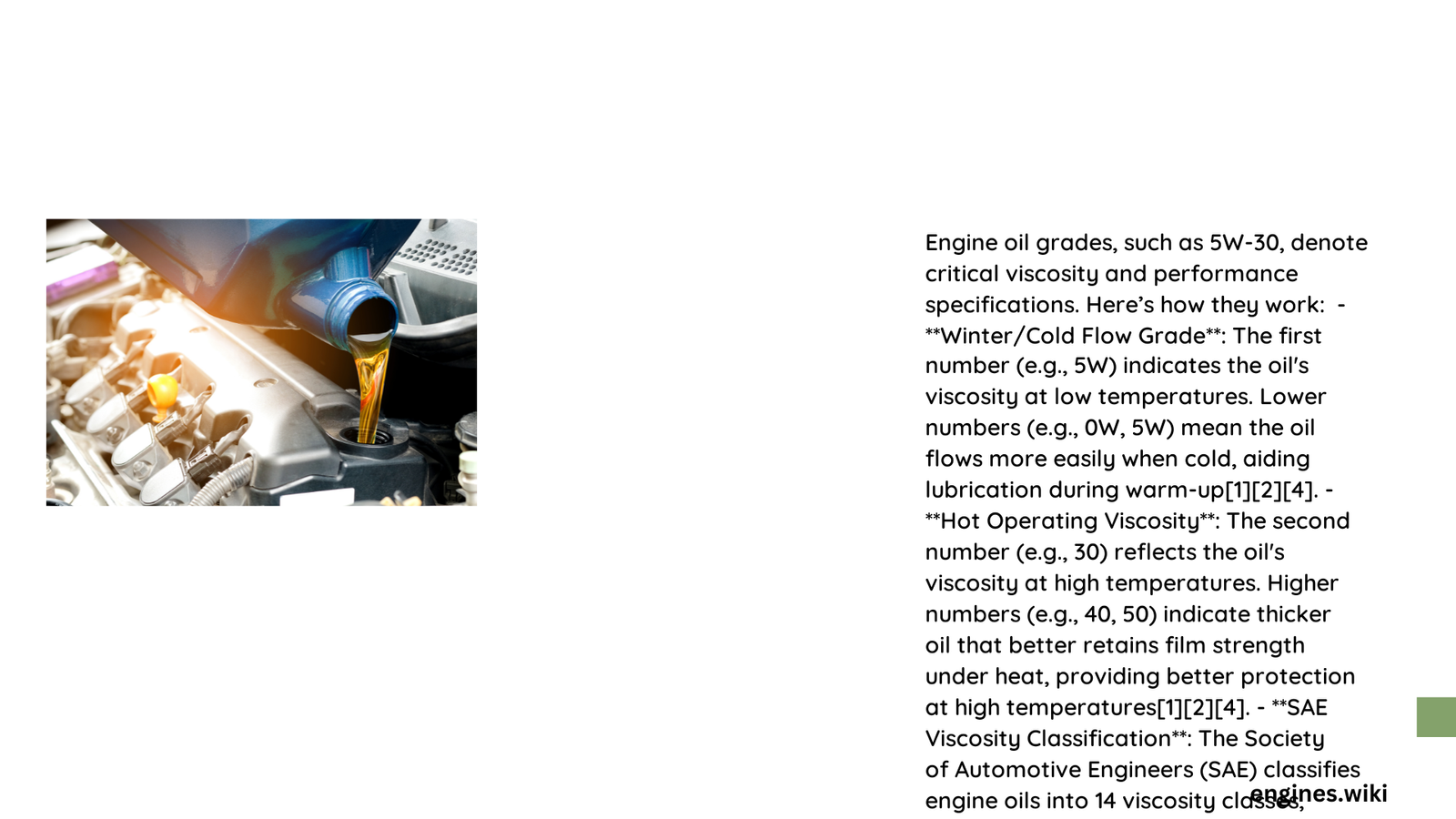Engine oil grades represent a sophisticated system of classifying lubricants based on their viscosity and performance characteristics across different temperatures. Understanding how engine oil grades work is crucial for maintaining optimal engine health, reducing wear, and ensuring efficient performance across diverse driving conditions.
What Are Engine Oil Viscosity Grades?
Why Do Oil Grades Matter?
Engine oil grades are standardized ratings that communicate an oil’s ability to flow and protect an engine under varying temperature conditions. The Society of Automotive Engineers (SAE) developed a comprehensive grading system that helps mechanics, engineers, and vehicle owners select the most appropriate lubricant for their specific engine requirements.
Key Components of Oil Grading
| Grade Type | Characteristics | Example |
|---|---|---|
| Winter Grade (W) | Low-temperature performance | 0W, 5W, 10W |
| Summer Grade | High-temperature viscosity | 20, 30, 40 |
| Multi-Grade Oil | Performs across temperature ranges | 5W-30, 0W-20 |
How Do SAE Viscosity Ratings Work?

What Determines Oil Viscosity?
Viscosity represents an oil’s resistance to flow. Lower numbers indicate thinner, more fluid oils that flow easily at cold temperatures, while higher numbers represent thicker oils that maintain film strength at high temperatures.
Low-Temperature Performance Factors
- 0W-5W Grades: Exceptional cold-start performance
- Startup Protection: Reduces engine wear during initial engine cranking
- Rapid Oil Circulation: Ensures immediate lubrication
High-Temperature Performance Characteristics
- 30-40 Grade Oils: Maintain thickness under extreme heat
- Film Strength: Prevents metal-to-metal contact
- Thermal Stability: Resists breakdown at high temperatures
What Makes Multi-Grade Oils Unique?
How Do Multi-Grade Oils Provide Versatility?
Multi-grade oils like 5W-30 combine low and high-temperature performance characteristics. They use advanced polymer additives called Viscosity Index Improvers (VIIs) that allow the oil to:
- Flow easily during cold starts
- Maintain proper thickness at operating temperatures
- Provide consistent engine protection across temperature ranges
What Role Do API Classifications Play?
How Do API Categories Indicate Oil Performance?
The American Petroleum Institute (API) classifies oils based on performance levels:
- Gasoline Engines (S Categories)
- SN: Modern gasoline engine protection
-
SP: Latest performance standard
-
Diesel Engines (C Categories)
- CK-4: Standard diesel engine oil
- FA-4: Advanced fuel-efficient formulation
What Factors Influence Oil Selection?
How Should Drivers Choose Engine Oil?
Consider these critical factors:
– Vehicle manufacturer recommendations
– Driving climate and conditions
– Engine age and design
– Manufacturer’s warranty requirements
Technical Insights into Viscosity Index
What Makes Some Oils More Stable?
The Viscosity Index (VI) measures an oil’s stability across temperature ranges:
– Higher VI indicates more consistent performance
– Modern oils typically range between 120-200 VI
– Advanced synthetic oils often exceed 200 VI
Practical Recommendations
What Oil Should You Use?
- Modern Passenger Vehicles: 5W-20, 5W-30
- Older Vehicles: Slightly higher viscosity grades
- Extreme Climates: Consult vehicle manual
Performance Impact
How Do Oil Grades Affect Engine Health?
- Reduced mechanical wear
- Improved fuel efficiency
- Enhanced engine longevity
- Better cold-start protection
Advanced Considerations
What Technologies Are Emerging?
- Synthetic oil developments
- Nano-additive technologies
- Enhanced polymer additives
- Predictive engine lubrication systems
Final Technical Perspective
Engine oil grades represent a complex interplay of chemistry, engineering, and performance optimization. By understanding these intricate systems, drivers can make informed decisions that protect their vehicle’s most critical mechanical components.
